ONLINE AUDIO TRACKLIST 02 On Pronunciation.mp3 03-1 Dialog-Greetings.mp3 03-1 Patterns-Exercises.mp3 03-2 Dialog-Greetings.mp3 03-2 Patterns-Exercises.mp3 04-1 Dialog-What is available?.mp3 04-1 Patterns-Exercises.mp3 05-1 Dialog-Where do you work?.mp3 05-1 Patterns-Exercises.mp3 05-2 Patterns-Exercises.mp3 06-1 Dialog-Going places.mp3 06-1 Patterns-Exercises.mp3 07-1 Dialog-Whats it called?.mp3 07-1 Patterns-Exercises.mp3 08-1 Dialogs-How much is it?.mp3 08-1 Patterns-Exercises.mp3 09-1 Dialog-Where to?.mp3 09-1 Patterns-Exercises.mp3 10-1 Dialog-What are you looking for?.mp3 10-1 Patterns-Exercises.mp3 11-1 Dialog-Likes and dislikes.mp3 11-1 Patterns-Exercises.mp3 12-1 Dialog-Talking to the teacher.mp3 12-1 Patterns-Exercises.mp3 13-1 Dialog-Whats included ?.mp3 13-1 Patterns-Exercises.mp3 14-1 Dialog-Can you handle spicy food?.mp3 14-1 Patterns-Exercises.mp3 15-1 Dialog-Employment history.mp3 15-1 Patterns-Exercises.mp3 16-1 Dialog-How do you feel?.mp3 16-1 Patterns-Exercises.mp3 17-1 Dialog-Lets eat, drink, play.mp3 17-1 Patterns-Exercises.mp3 18-1 Dialog-Monastic Burmese.mp3 18-1 Patterns-Exercises.mp3 19-1 Dialog-Time to say goodbye.mp3 19-1 Patterns-Exercises.mp3 The Audios may also be Downloaded. 1. You must have an internet connection.
1. You must have an internet connection.
2. Type the URL below into your web browser.
http://www.tuttlepublishing.com/Easy-Burmese For support, email us at . Learn to Speak Burmese Quickly!EASY Burmese KENNETH WONG Department of South and Southeast Asian Studies University of California, Berkeley 
 CHAPTER 1A Basic Introduction Colloquial Burmesethe spoken Burmese you can use to barter with local merchants, order tea in a teashop, or introduce yourself to someoneis not that difficult. You dont have to learn a whole lot of grammar; you can master a few basic patterns and you can recycle them to suit your needs.
CHAPTER 1A Basic Introduction Colloquial Burmesethe spoken Burmese you can use to barter with local merchants, order tea in a teashop, or introduce yourself to someoneis not that difficult. You dont have to learn a whole lot of grammar; you can master a few basic patterns and you can recycle them to suit your needs.  The chapters in this book are designed to expose you to the most useful structures.
The chapters in this book are designed to expose you to the most useful structures.
The plot introduces you to Naing Oo, a Burmese-American returning to Yangon to start a travel business; Naing Oos girlfriend Samantha, who wants to improve her Burmese; and Naing Oos childhood friend Win San, who serves as their local contact. As you follow in their footsteps and eavesdrop on their conversations, you pick up useful expressions for self-introduction, going around town, shopping, talking about local culture, conducting business, and much more. You might notice that the way Naing Oo addresses his childhood friend Win San, and the way Win San addresses Naing Oos girlfriend Samantha are distinctly different. In his dialogues with Win San, Naing Oo tends to use the pronouns nga for I, min for you. On the other hand, Win San usually addresses Samantha by name, not with a pronoun. And when Samantha speaks to Win San, she uses the pronouns kyama for I, and Win Sans own name as a substitute for you.
These differences highlight one of the most important aspects of spoken Burmese: You use a different set of pronouns based on your gender, how well you know the other person, how much older or younger you are, and how much respect you wish to convey. Casual and Formal Styles The casual and formal styles are defined primarily by the pronouns you use and how you end your sentences. These function as respect markers in your conversation. You may safely use the casual style if you meet both conditions below: You have a close or intimate relationship with the other person; You and the other person are of the same age group (i.e. the age difference between you is no more than five or six years). If you know the other person well, but he or she is significantly older than you, the casual style is not recommended.
By the same token, if youre speaking to a stranger or an acquaintance, even if youre both the same age, the casual style is not recommended. In those instances, the formal or polite speech is the safer bet. Basically, in the casual style, you use nga for I and min for you, if youre male; and nga for I and nin for you, if youre female. In formal or polite style, you use kyanaw for I and khamyar for you, if youre male; kyama for I and shin for you, if youre female. For extra politeness, you may also end your sentences with khamyar if youre male, or shin if youre female. Note that sometimes khamyar is pronounced khamya with a short final vowel for emphasis.
One curious feature of the formal or polite style is the speakers tendency to minimize the use of the second-person pronoun you. Native speakers feel even the polite versions of youkhamyar (used by men) and shin (used by women)sound extremely confrontational and accusatory. Therefore, whenever possible, they tend to use the name of the person as a substitute. For example, when Samantha wants to ask Win San to give her Burmese lessons, she says: Ko Win San go aku a nyi taung jin dae. It literally translates to, Id like to ask Mr. Win San a favornot Id like to ask you a favor. Statements, Requests, and Questions The three types of sentences youll likely encounter in your daily conversations are (1) statements, (2) requests or commands, and (3) questions. Statements, Requests, and Questions The three types of sentences youll likely encounter in your daily conversations are (1) statements, (2) requests or commands, and (3) questions.
You can usually tell what type of sentence youre dealing with by looking at how it ends. Statements about recent and past events Statements about recent and past events usually end with tae, sometimes pronounced dae. Sar dae. (I ate.)Thauk tae. (I drank.) For emphasis, statements about actions in the past may be marked with khaet, also pronounced gaet, following the verb, but its not mandatory. Sar gaet dae.(I ate)Thauk khaet dae.(I drank) Note: Just like in English, a simple present Burmese verb may also be used to describe habits and routine activities.
Note: Just like in English, a simple present Burmese verb may also be used to describe habits and routine activities.
So Amae thar sar dae, for example, may also mean, I usually eat beef / I can eat beef. Statements about future events Statements about future events usually end with mae. Sar mae. (Ill eat.)Thauk mae. (Ill drink.) Statements about actions in progress Statements about actions in progress are marked with nay following the verb. (Im eating.)Thauk nay dae. (Im drinking.) Negative statements Negative statements usually end with boo, sometimes pronounced phoo. Ma sar boo. (I dont eat. / I didnt eat. / I wont eat.)Ma thauk phoo.
(I dont drink. / I didnt drink. / I wont drink.) Requests and commands to do something Requests and commands to do something usually end with pah, sometimes pronounced bah. / I wont drink.) Requests and commands to do something Requests and commands to do something usually end with pah, sometimes pronounced bah.
Requests and commands forbidding Requests and commands for bidding you from doing something usually end with
Next page

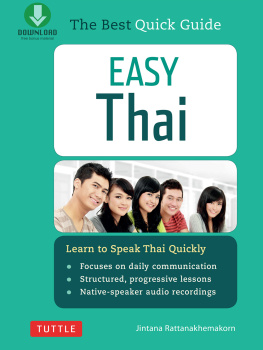
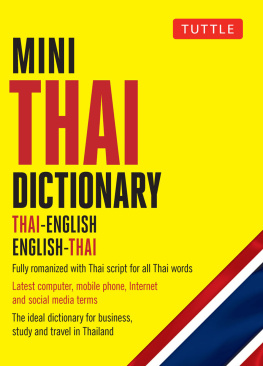





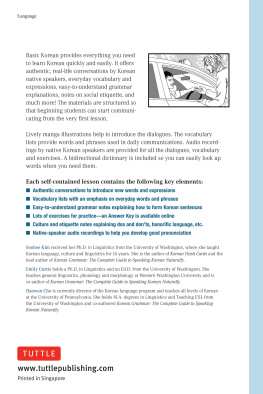
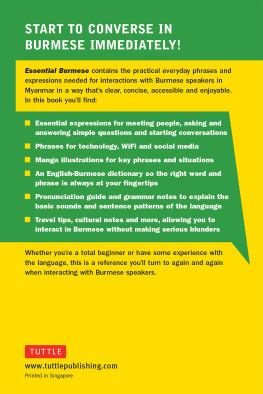
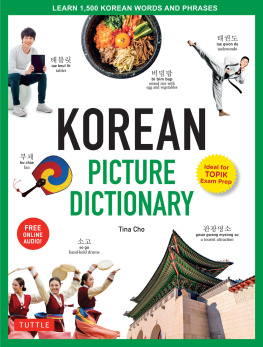
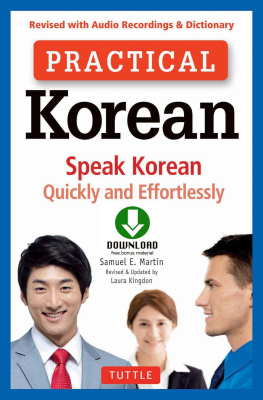

 1. You must have an internet connection.
1. You must have an internet connection.
 CHAPTER 1A Basic Introduction Colloquial Burmesethe spoken Burmese you can use to barter with local merchants, order tea in a teashop, or introduce yourself to someoneis not that difficult. You dont have to learn a whole lot of grammar; you can master a few basic patterns and you can recycle them to suit your needs.
CHAPTER 1A Basic Introduction Colloquial Burmesethe spoken Burmese you can use to barter with local merchants, order tea in a teashop, or introduce yourself to someoneis not that difficult. You dont have to learn a whole lot of grammar; you can master a few basic patterns and you can recycle them to suit your needs.  The chapters in this book are designed to expose you to the most useful structures.
The chapters in this book are designed to expose you to the most useful structures. Note: Just like in English, a simple present Burmese verb may also be used to describe habits and routine activities.
Note: Just like in English, a simple present Burmese verb may also be used to describe habits and routine activities.